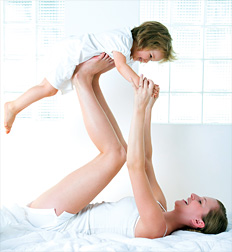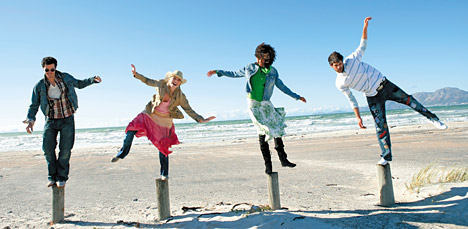The Basics of Balance
By Dr. Brian Jensen
Balance is easy to take for granted; after all, our every movement relies upon it in some fashion. Most of the time, we only notice balance when it fails us - like when we trip for "no reason" or find ourselves leaning slightly to the left or right while standing. Actually, without balance, we couldn't do much at all, which is why it's so important to build a foundation of proper balance, particularly as we age. Let's learn more about the fundamentals of balance.
Balance: When you look up the word in the dictionary, there are more than two dozen ways it can be used; for the purpose of this discussion, let's consider balance as it relates to our physical structure. Balance is controlled by three distinct systems: the visual system (eyes), the vestibular system (inner ear) and proprioception [proh-pree-uh-sep-shuhn] - a very complex system of sensors in the skin, joints, muscles, tendons and ligaments that are responsible for you feeling vibration, pressure and the overall awareness of the position of your body.
 If you lift your hand above your head, you are aware of the fact that it is above your head; you can sense it being there because of proprioception. If you stand very still and pay attention to your body movements, you can sense subtle motions of leaning back and forth as your body gently sways. Your eyes, the fluid-filled canals in your ears and the sensors in your feet are telling the brain which muscles to contract to keep you standing upright with your eyes level with the horizon. If you close your eyes, removing one of the senses that is keeping you upright, you are likely to sway more dramatically and could even fall. (Be careful if you try this exercise. Stand next to something you can hang onto if you need to!) Sometimes an ear infection can cause one to feel dizzy; that is because the brain is getting distorted information about balance.
If you lift your hand above your head, you are aware of the fact that it is above your head; you can sense it being there because of proprioception. If you stand very still and pay attention to your body movements, you can sense subtle motions of leaning back and forth as your body gently sways. Your eyes, the fluid-filled canals in your ears and the sensors in your feet are telling the brain which muscles to contract to keep you standing upright with your eyes level with the horizon. If you close your eyes, removing one of the senses that is keeping you upright, you are likely to sway more dramatically and could even fall. (Be careful if you try this exercise. Stand next to something you can hang onto if you need to!) Sometimes an ear infection can cause one to feel dizzy; that is because the brain is getting distorted information about balance.
How We Develop Balance
Balance is an inborn characteristic that starts developing shortly after birth. As eyesight improves, the muscles of the neck develop as a child explores their new world and eventually is able to lift their head, which begins the development of the forward curve in the neck. This is followed by creeping and crawling, during which the curve in the low back is formed. This is all necessary for the ultimate act of balance to occur: standing. Standing is followed by falling (over and over again) as the brain is flooded with information regarding where we are in space. All of this information ultimately is used to initiate the first steps of walking (however uncoordinated they may be). You can see the efficiency develop and soon the walking turns into running.
Feet: The Foundation of Proper Balance
The feet are very important in balance and posture because they are loaded with proprioceptive sensors. These sensors are constantly sending signals to the brain, which then sends signals back down the spinal column to the muscles telling them when to contract and when to relax. Every movement from standing to walking, running and jumping are controlled by this system.

How efficiently the joints of the spine work are directly affected by the feet. There are three arches in each foot that serve as the foundation of the entire body. Studies have shown that nearly 80 percent of the population has lost some or all of the support in those arches. When that happens, it creates physical stress in the feet, knees, hips, pelvis and spine, as well as an abnormal amount of stress on the special receptors in the feet that are trying to communicate with the brain. This physical stress can contribute to degenerative arthritis, while the neurological stress can interfere with normal muscle function.

